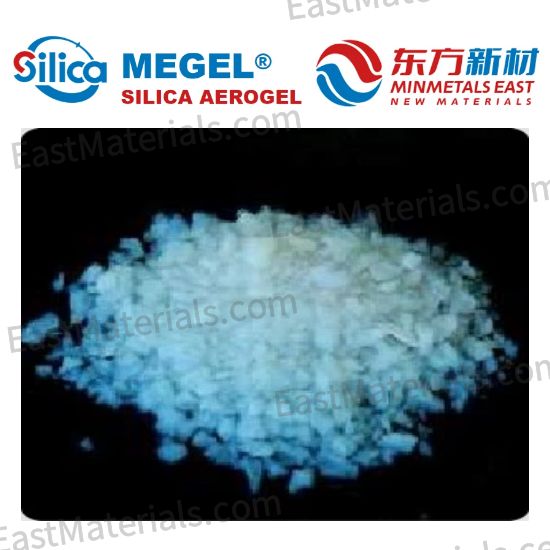Choosing the right aerogel powder for use in Vacuum Insulation Panels (VIPs) requires careful consideration of several factors to ensure optimal performance and suitability for specific applications. Below is a guide on how to select aerogel powder in VIPs, focusing on important criteria and considerations.
Key Factors to Consider of Silica Aerogel Powders
Thermal Conductivity
Lower Values are Better: Look for aerogel powders with the lowest thermal conductivity (ideally in the range of 0.01 to 0.03 W/(m·K)). This will directly impact the insulation performance of the VIP.
Testing Standards: Ensure that the thermal conductivity is measured following recognized industry standards (e.g., ASTM or ISO).
Density
Lightweight Materials: Consider the density of the aerogel powder, as lower density (typically 0.03 to 0.3 g/cm³) results in lighter panels that can be easier to handle and install.
Trade-offs: While lower density reduces weight, it may also impact mechanical properties. Balance these based on application needs.
Aerogel Insulating Solutions Porosity and Surface Area
High Porosity: High porosity (>90%) helps to trap air effectively, improving insulation quality.
Surface Area: A higher surface area can improve absorption and bonding with other materials when forming composite panels.
Particle Size and Distribution
Optimal Size: Finer aerogel powders (typically in the micron range) can provide better thermal insulation due to a larger surface area, but harsh conditions during processing must be considered.
Uniform Distribution: Look for suppliers that offer consistent particle size distribution to ensure uniformity in panel performance.
Mechanical Strength and Flexibility
Structural Integrity: Aerogel powders should have sufficient mechanical strength to withstand handling and installation stresses.
Flexural Strength: Consider the requirements based on panel thickness and intended use, as some applications may require more flexibility or rigidity.
Hydrophobic/Hydrophilic Properties
Choosing Based on Environment: Depending on the application environment (e.g., humid conditions), hydrophobic aerogels may be preferable as they resist moisture absorption.
Long-term Performance: Hydrophilic materials may require protective coatings or barriers to prevent moisture-related degradation.
Thermal Stability of Silica Insulations
High Temperature Tolerance: Ensure that the aerogel powder can withstand the expected temperature range of the intended application without significant degradation. Look for materials with high thermal stability (>300°C) for more demanding environments.
Fire Resistance
Fire Safety Standards: Evaluate the combustibility and fire resistance of the aerogel powder. Non-combustible aerogels are generally preferred in applications requiring high safety standards.
Cost and Availability
Budget Considerations: Aerogel materials can vary significantly in cost. Compare the performance benefits to the costs and consider your budget.
Supplier Reliability: Check the availability and reputation of suppliers to ensure you can obtain the aerogel powder consistently.
Environmental and Health Considerations
Sustainability: Look for aerogel materials that have been produced using environmentally friendly methods.
Health and Safety: Ensure that the powder complies with safety regulations and standards, particularly if it involves worker exposure during manufacturing or ins



